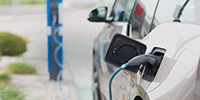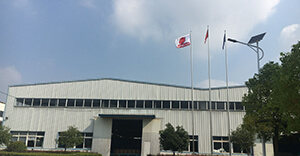What is the lifespan of a lead acid battery?
|
Lead-acid batteries are one of the most common electrochemical energy storage devices. They are used in a variety of applications, most people are accustomed to using them in vehicles, where their ability to provide high currents for cranking power is valued. For remote power systems, deep discharge batteries are used. Unlike car starter batteries which are used to provide high current for very short periods, deep discharge batteries are designed to hold larger amounts of energy for longer periods of time. Although batteries are reliable, they have a limited life, are heavy to ship, and contain toxic materials that require removal at the end of their useful life. Typically, remote applications require larger batteries that have higher amounts of lead and more room for "electrolyte". Lead-acid batteries have moderate power density and good response time. Depending on the power conversion technology incorporated, batteries can go from accepting energy to supplying energy instantaneously. Lead-acid batteries are affected by temperature and must be well maintained to achieve maximum life expectancy. Battery Shelf Life like calendar life is the time an inactive battery can be stored before it becomes unusable, usually considered as having only 80% of its initial capacity. See also Battery Storage Battery Cycle Life is defined as the number of complete charge - discharge cycles a battery can perform before its nominal capacity falls below 80% of its initial rated capacity. Key factors affecting cycle life are time t and the number N of charge-discharge cycles completed. An obvious example is the Depth of Discharge (see below) which is a simple reciprocal mathematical relationship, but there are many more complex factors which can also influence performance. Lifetimes of 500 to 1200 cycles are typical. The actual ageing process results in a gradual reduction in capacity over time. When a cell reaches its specified lifetime it does not stop working suddenly. The ageing process continues at the same rate as before so that a cell whose capacity had fallen to 80% after 1000 cycles will probably continue working to perhaps 2000 cycles when its effective capacity will have fallen to 60% of its original capacity. There is therefore no need to fear a sudden death when a cell reaches the end of its specified life. The shelf life of a sealed lead acid battery varies according to several factors Temperature: (The ideal temperature to store SLA batteries is 50 degrees Ferhnheit or less.) A SLA (Sealed Lead Acid) battery can generally sit on a shelf at room temperature with no charging for up to a year when at full capacity, but is not recommended. Sealed Lead Acid batteries should be charged at least every 6 – 9 months. A sealed lead acid battery generally discharges 3% every month. Sulfation of SLA Batteries If a SLA battery is allowed to discharge to a certain point, you may end up with sulfation and render your battery useless, never getting the intended life span out of the battery. Sulfation is when the electrolyte in the sealed lead acid battery begins to break down. Sulfur in the solution leachs from the electrolyte and begins to stick to the lead plates becoming Lead Sulfuric Crystals. The crystal build up on the lead plates keeps the plates from working as intended and also eliminates the needed sulfur in the electrolyte solution. Storage Temperatures of SLA Batteries The combination of these issues weakens the ability of the battery to accept and and deliver a charge. If you are going to store sealed lead acid batteries on a shelf without charging them, it is recommended you store the batteries at 50 degrees Fahrenheit/ 10 degrees Celsius or less. Periodic Recharging of SLA Batteries When storing sealed lead acid batteries for long periods, it is recommended that you top charge the batteries periodically. The top charge should be for 20 – 24 hours at a constant voltage of 2.4 volts per cell. 6 volt sealed lead acid batteries have 3 cells which amounts to 7.2 volts where as 12 volt sealed lead acid batteries have 6 cells which amounts to 14.4 volts. Replacing your SLA battery If your SLA battery has been stored for some time and is now not holding a charge then it is no longer serviceable and will need to be replaced. Whatever the battery is, BULLSBATTERY can offer you substantial savings. To make it easy we’ve made it possible for you to search out your replacement in a number of ways: By dimensions, voltage and Amperage if you can’t see any part number |













